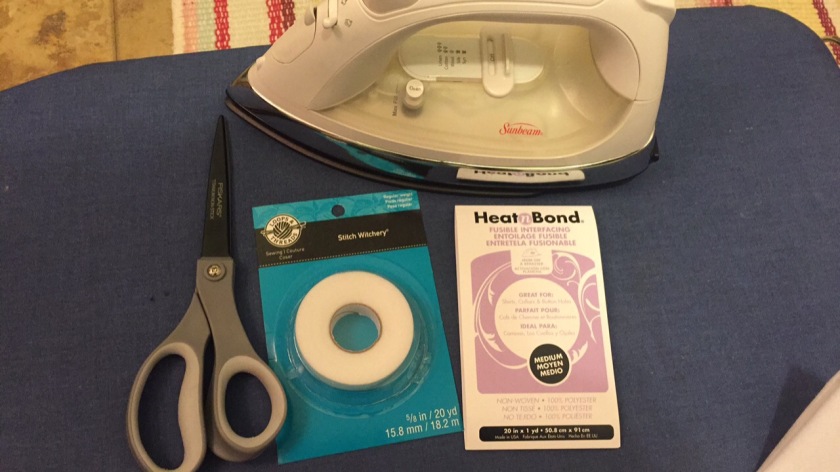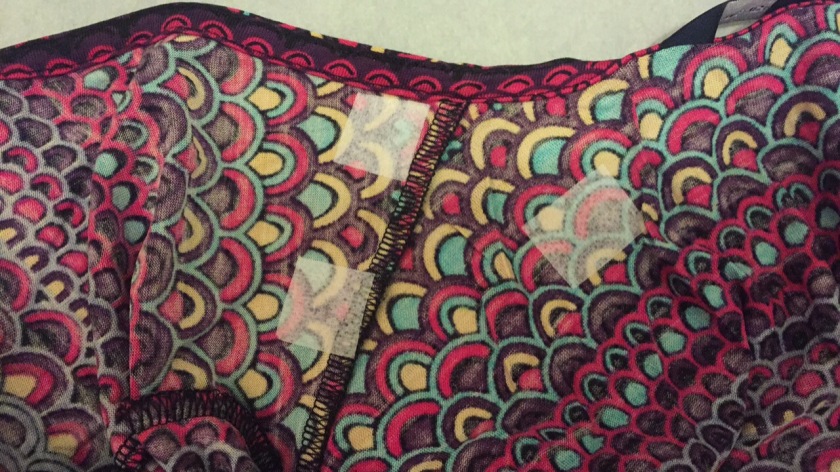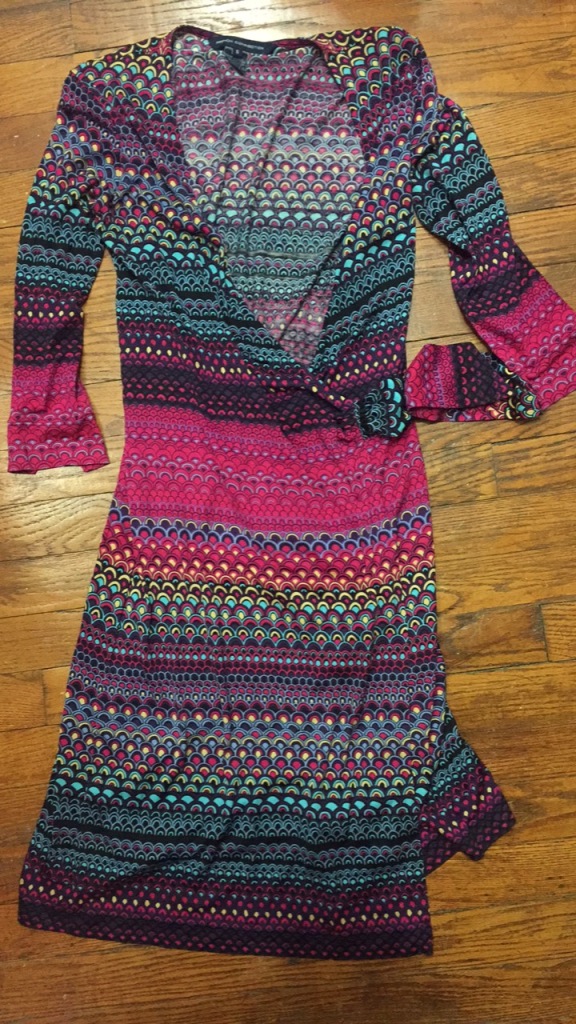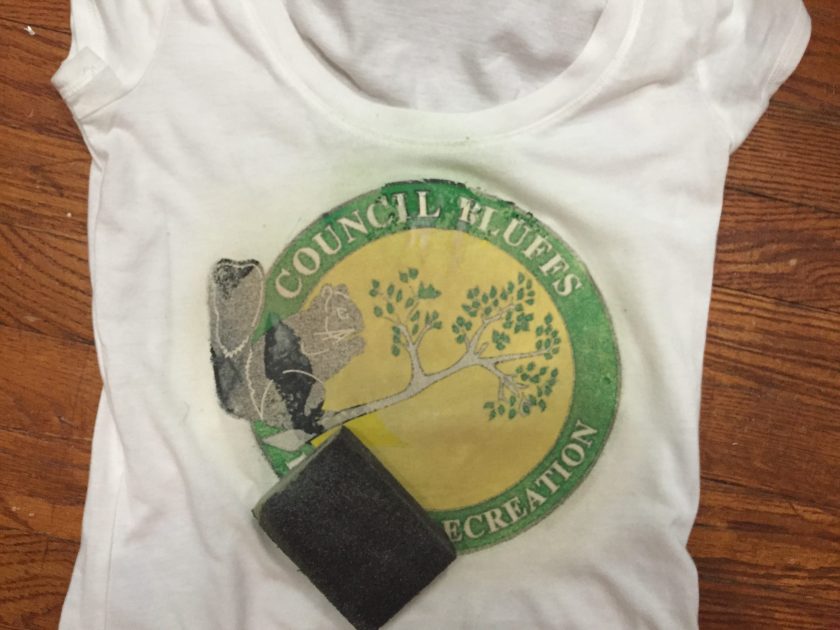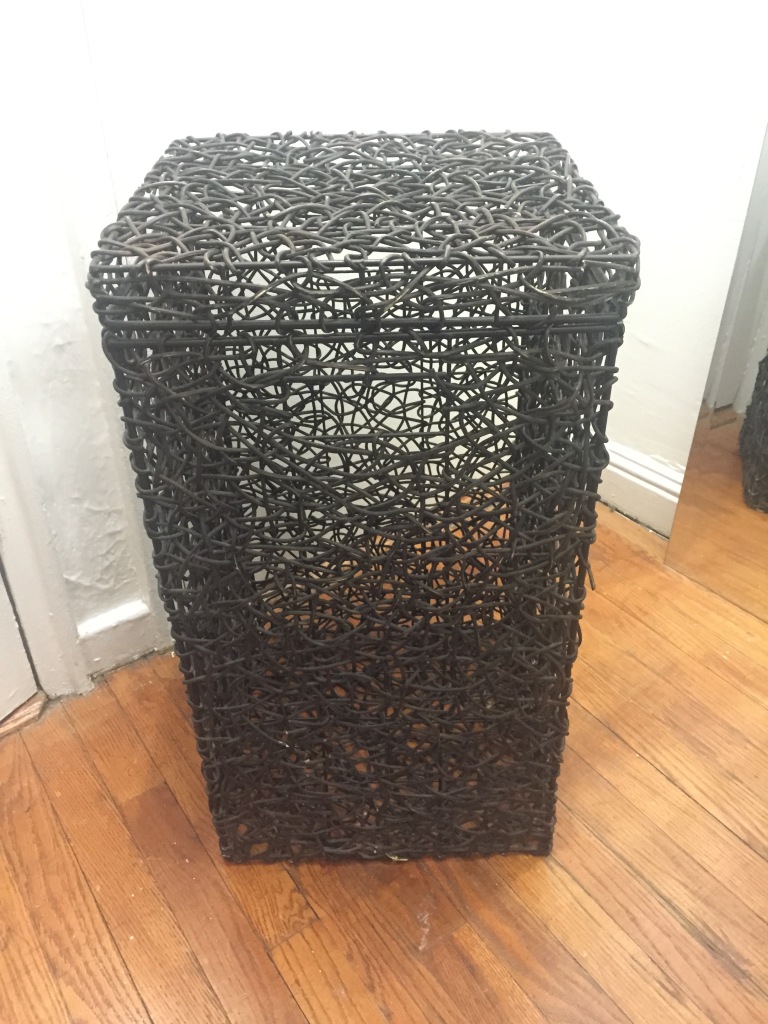A few years ago, I was at a consignment shop and fell in love with a Diane von Furstenberg wool wrap dress. As I was admiring it, I noticed a few small holes throughout the dress. Not wanting to leave it behind, I negotiated an extra 10% discount, figuring I could try my hand at mending the holes. And I did!
Fast forward a few years, and I regularly buy wool items with holes in them, knowing that darning small holes is fairly easy and unnoticeable.
I recently bought a sweater dress from Goodwill, and didn’t notice a hole in the sleeve until I got home. The previous owner had repaired it with some scotch tape! That’s not good enough for me, so I broke out a needle and thread and got to darning the hole.
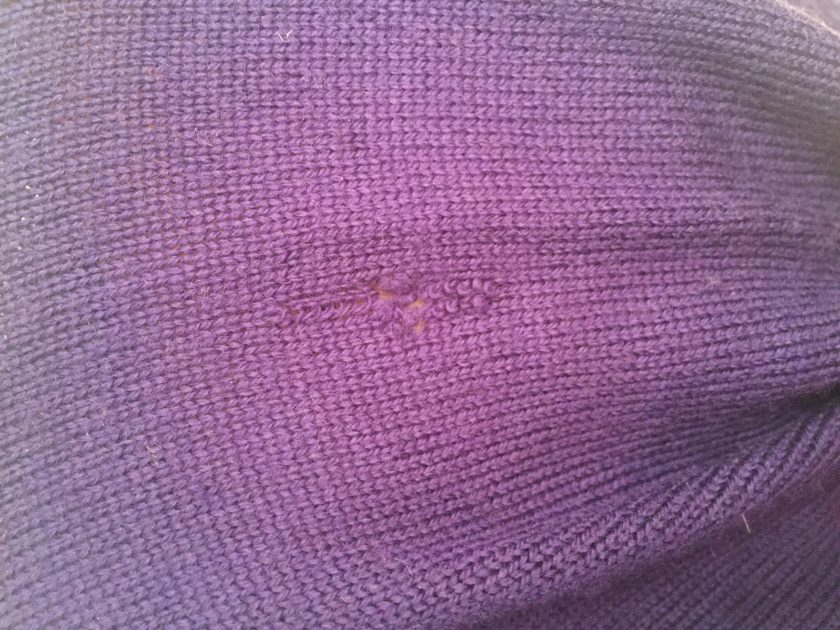
There are a lot of darning techniques, and everyone seems to put their own spin on it. Most tutorials say to work from the inside of the garment, but I prefer the outside, so I can make sure it’s coming together well.
I start with a knot on the thread on the inside, and push the needle through to the outside. Make sure the needle isn’t so close to the hole that it could get pulled into the hole. Then I start pushing the needle through the knit weave, working my way across the hole.
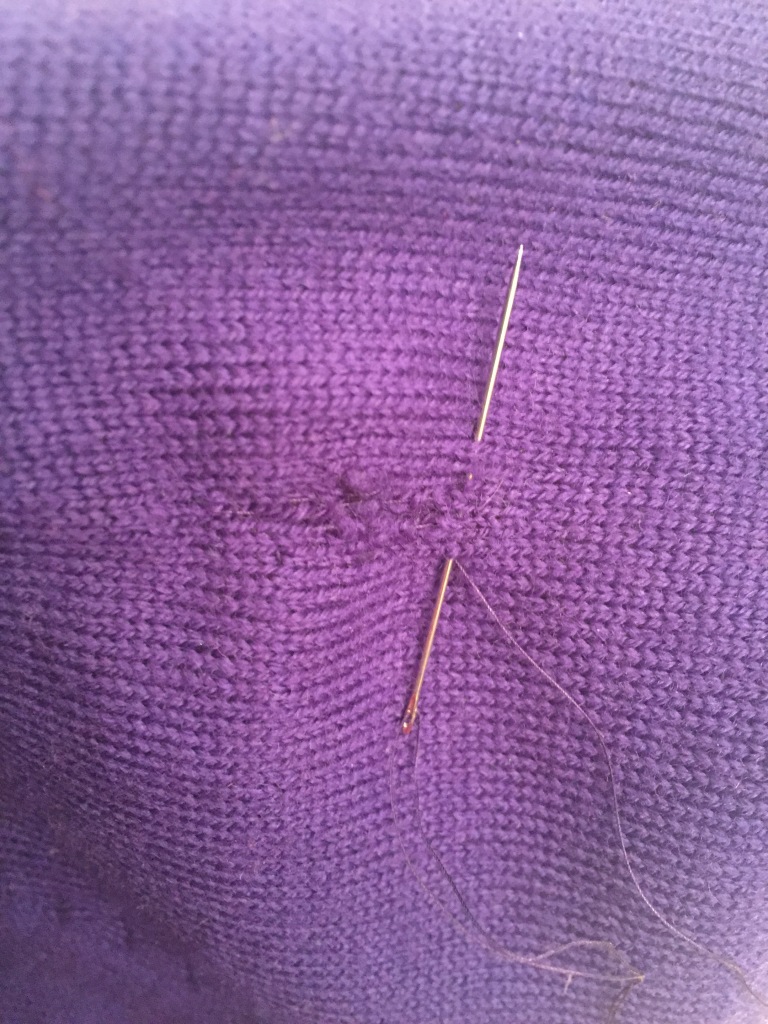
Back and forth, back and forth. Once I’ve been across the whole hole in one direction, it’s time to go back in the perpendicular direction.
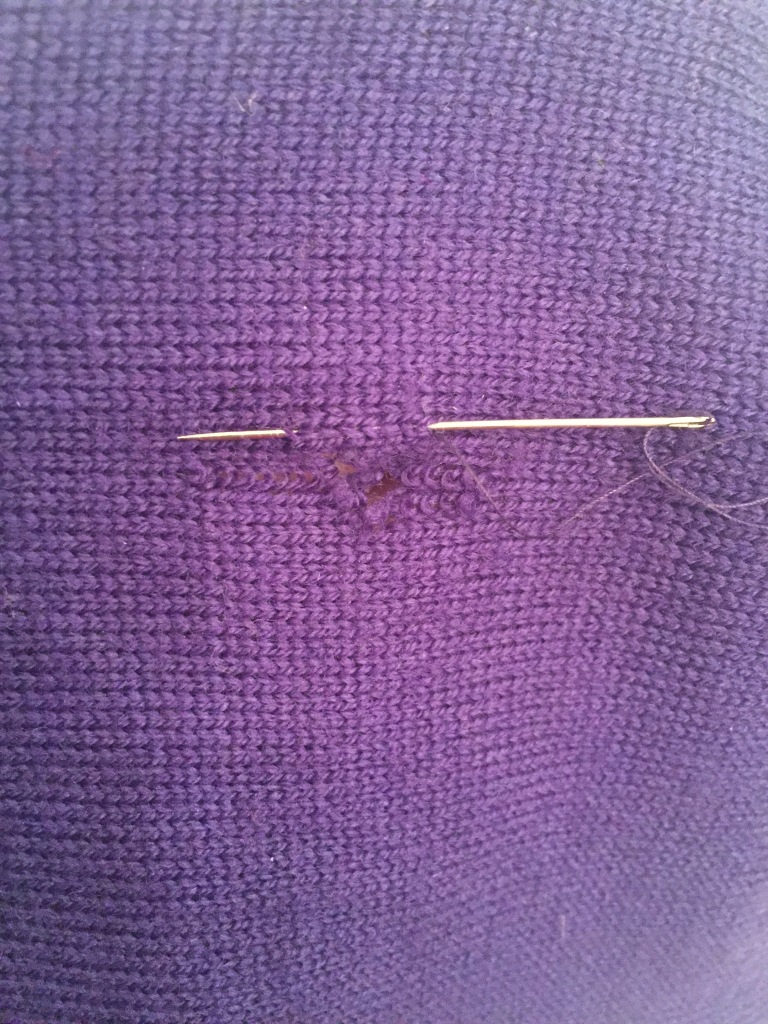
Back and forth, back and forth, making sure to weave above and below the threads just added.
I make sure it’s tight enough to hold, but not so tight that it puts a pucker in the fabric. I end with the thread next to the beginning end, and tie the two together a few times.
And then it’s done!
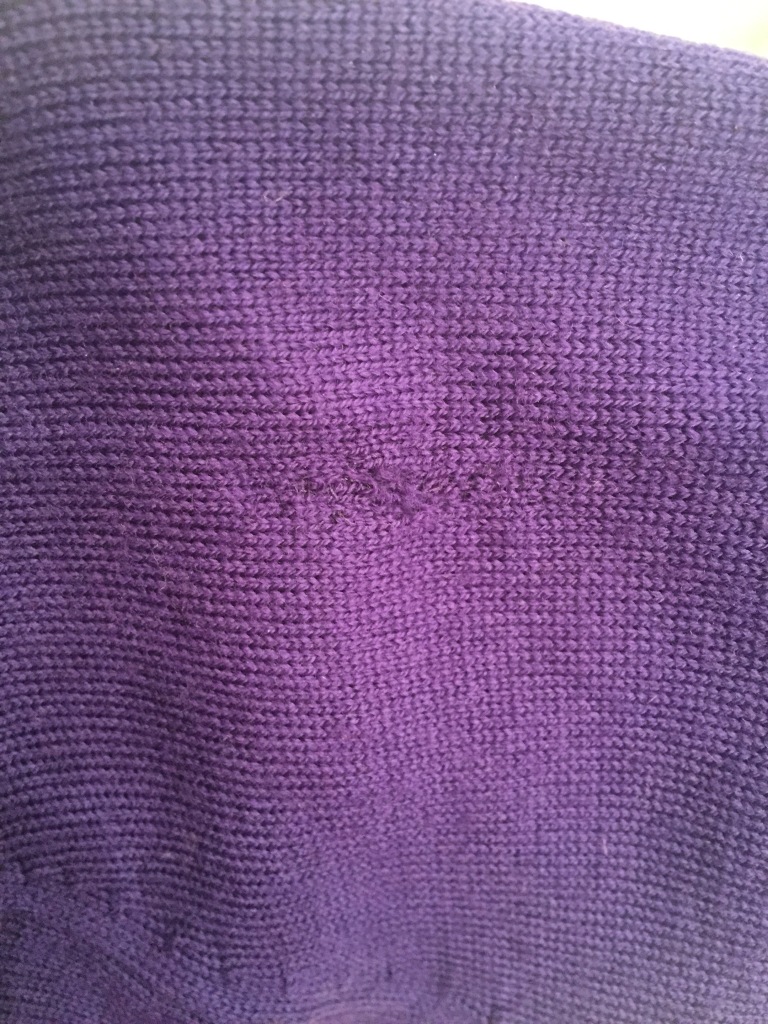
Depending on the hole size and location, some are easier to mend than others. This hole was more of a long snag, and it still is visible if you’re looking for it. The hole is located on the upper arm, which means it won’t be very apparent from most angles. I bet no one would’ve even noticed if I hadn’t just shared this publicly!
PS. This dress also had some button accenting the end of the sleeves, which I removed with a small pair of scissors. Who says that when you buy something it has to stay that way forever (I’m sensing a trend)?!


